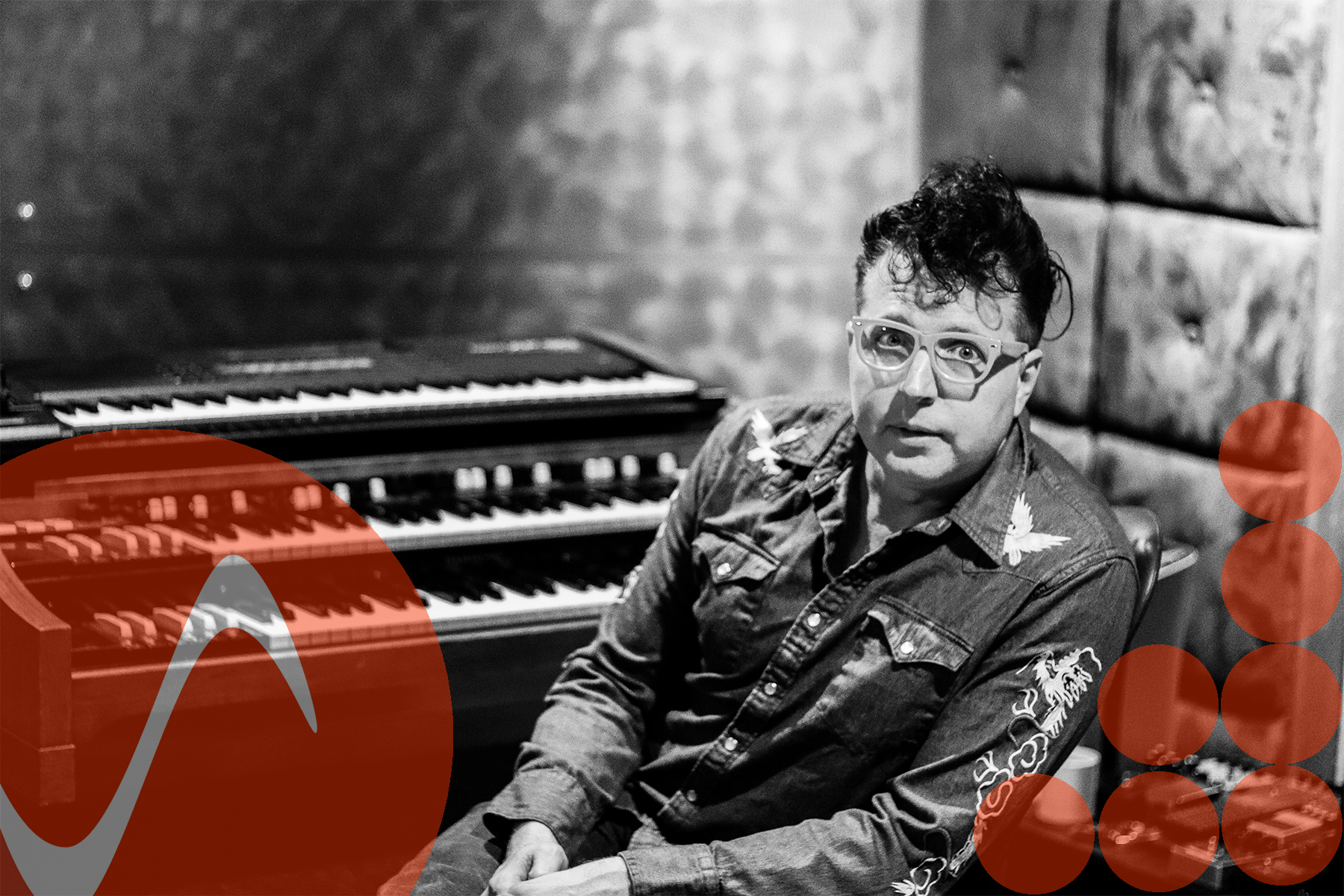
IN THE GROOVE ARTIST SPOTLIGHT: MARK MALLMAN
By: Seth Lienard and Laura Lou DuSchane
Mark Mallman is a hard guy to put into a box. Mark has developed a following for his unique stage show and infectious song writing. Along with a successful performance career, Mark has been composing for film and TV since the early 2000s. Mark has been working with In The Groove Music (ITG) for a number of years in different roles from work-for-hire projects to composing for tv and advertising. Represented by ITG, Mark is a true “triple threat” ITG Artist.
Recently, Mark published a memoir entitled The Happiness Playlist, documenting his story of grief and how happy music impacted his own mental health and affected his mood. The book takes you through the streets of Minneapolis while giving the reader an intimate snapshot of Mark’s world and all he was experiencing. We got to sit down with Mark as he was dropping off a few copies of his book at the ITG Studios.
ITG: What originally brought you in to In The Groove, and how is it that you’re sitting in the studio here today?
MM: When Darren approached me roughly ten years ago about representing an album or two we started with my Do You Feel Like Breaking Up EP and then we moved into my album Invincible Criminal. I was touring a lot at that point so I really didn’t start composing for them until a few years later. Sometime in the last five years I started putting ITG as one of my primary composing focuses and it has ramped up in the last three to five years.
ITG: Tell us a little about your working experience with ITG?
MM: I love everything that we’ve done together. This group allows me the same creative freedom that I have as a solo artist, only I can explore genres that I don’t usually explore as an already branded “rock artist” that fits what I do for my fans that buy my albums. For example, I am really loving Dua Lipa and Billie Eilish right now, but if I put out a record like that as a seventies style piano rock guy, it wouldn’t work. Working with ITG allows me to express my creativity that is true to my heart.
ITG: Are there projects you’ve done with us that you’ve been especially proud of?
MM: Much of what I’ve done for ITG has been work for hire stuff like the Taco John’s spot or the ESPN opener. Those things are the more traditional projects that I do as a composer where I’m asked to make a certain genre of music that enhances some visuals.
Like even that Taco John’s thing that I did- I knew they wanted something that was “so bad it’s good” but what I found was that the production and the singing needed to ride on that kind of amateur level and the song writing needed to be super catchy, super jingly. So what I did was I spent the time and wrote these really great songs and then recorded in an “off-the-cuff” way so then people are like, “this is a weird song but it’s so f****** catchy.” People come up to me all the time and are like, “That’s so catchy; my wife hates it!”
Was that a compliment?
MM: Ha, yeah I was so honored to write a jingle. To be able to write one jingle in my life was a thrill!
ITG: What do you like about composing music for TV & Film?
MM: I’m not a purist when it comes to music. I believe music is a part of a thing, not a thing in and of itself. It’s supplementary. If someone argued that I’d say; “don’t you put on music when you go to the gym; don’t you put on music when you have a dinner party?”
That has proved to me that music has both a functional aspect as well as a conceptual aspect to it. Music allows us to access feelings that we may not otherwise be able to put into words. It speaks for us and I feel like that’s why we identify with certain music. It’s because we have an idea or an emotion that we can’t express for whatever reason, and a song can do that. It’s a conduit and I feel the same is true with visual media, whether it’s television or a film trailer or even a video game. You can express the narratives that are happening with music. I like to be a counterpart; I like to be a working part of the storytelling machine.
What’s great about writing for something that has a specific narrative with ITG is that we’re not communicating about it in ways like I would with a producer. Instead, we’re communicating about how can we fit with the visual, how can we enhance the narrative more so than how we are making a piece of art that stands on its own? The work that I do for ITG can’t stand up on its own, but I feel like it’s created to be paired with a visual.
ITG: If you were going to give advice to somebody that wanted to get into composing and licensing their music what would you say?
MM: I don’t believe that we should try to do anything. You shouldn’t aspire to anything, just be it. Are you a songwriter or aren’t you? The music is precious and sacred; it’s super powerful. I don’t know if we always know what’s best for us, so we have to let life lead. I think sometimes by trying, we’re failing; by being, we’re succeeding. People who are creative and productive, whether they start a band or they write songs, or even if they go out to see and experience music, that’s not handed to you. You have to take initiative and do it. In any city or in any capacity where a person takes out an instrument and brings music into the world where there once was no music, it’s a positive thing. So just create your music and let it be. Have faith in the music. You can read a million “how-to” business books, but if you go to Coachella and look at the lineup and take six artists, their stories are as different as six people who are riding the city bus. People have to recognize in music that there’s no formula and there’s no path, all there is is blind faith in yourself.
ITG: How did your book The Happiness Playlist come about?
MM: I woke up in a panic attack that didn’t go away. I had to rethink what I allowed into my brain at that point because my amygdala response was hyperactive. It was actually a gift, but it felt like a curse. I had to rethink my relationship as a listener to music and not a creator. The book is actually about being an active listener and allowing music to function. I asked myself, “how am I going to use music to enhance my life.” So, the book is about the true story of how I used this happiness playlist to just tackle heavier stuff. It’s a companion to bigger books that you might read by a licensed doctor or scientist.
ITG: In the book, you paint such a vivid picture of Minneapolis. How have you seen the scene grow and change over the last ten years??
MM: Minneapolis has a history of creativity, open-mindedness, diverse thinking, and diverse genres. It’s an exponential well of sonic spectrums to draw from because we’re trapped inside by the snow a lot of the time which means we have to be in the studio more. But, I toured for 10 years and I hate to compare it to other cities because each city has its own kind of magic. Minneapolis is isolated in sort of a utopian way. It allows you to soar like a creative eagle flying with the help of people coming out to hear your weird projects. I love that about Minneapolis. I like that it has a supportive arts community- one of the best in the country. I adore the community here.
ITG: If someone is from out of town and needs a primer on Minneapolis artists, who would you recommend they listen to?
MM: I would say Lifter Puller, the “batches of cookies” era Lizzo, and 12 Rods.
Mark Mallman’s new book The Happiness Playlist is available on Amazon and Kindle.
Interested in becoming an ITG Artist? Shoot us an email at [email protected]!
Minneapolis Office
625 2nd Avenue South Suite 102
Minneapolis, MN 55402
PHONE
612.305.1229
